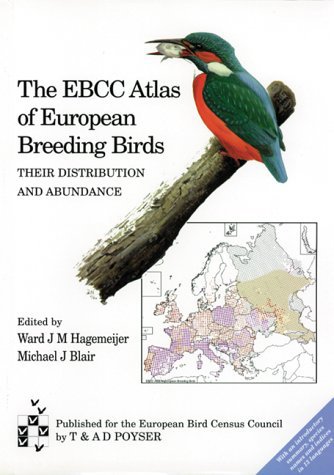THE FIRST EBCC ATLAS
The first European Breeding Bird Atlas (EBBA1) was published by the European Bird Census Council (EBCC) in 1997. Work for the atlas started in the 1970s with the definition of standards for atlas work. EBBA1 was a milestone in European ornithology but it lacked good information from eastern Europe. Moreover, European landscapes and climate have seen marked changes since the 1980s, when most of the data for EBBA1 were collected. A new atlas project was therefore launched by the EBCC in 2010.
FIELDWORK IN THE 1980s
EBBA1 integrated data on the distribution and abundance of breeding birds, compiled at national level, into a European database. Most of the fieldwork was done in the 1980s, although the exact data collection period varied among countries. Thanks to the coordinated efforts of thousands of ornithologists and birdwatchers, accurate information on distribution, breeding evidence and abundance was gathered for 495 species in 3950 50-km UTM squares. This represented a major achievement of international cooperation in a time without internet and with several political tensions in Europe.
THE BOOK
Published in 1997, the book showed not only distribution maps but also informative texts written by species specialists from across Europe. It was a milestone in European ornithology and contributed to the development of bird atlas and monitoring work across the continent. The atlas has been cited in more than 3000 scientific publications. Some of the constraints recognised by the scientific community, such as its poor coverage in the east of Europe, the lack of information on distribution change and the coarse resolution received special attention during the planning for the second atlas EBBA2 in the 2010s.
EBBA1 data can be accessed at GBIF

RECOMMENDED EBBA1 BOOK CITATION
Hagemeijer, W.J.M. & Blair, M.J. (1997). The EBCC Atlas of European Breeding Birds: Their Distribution and Abundance. T. & A.D. Poyser, London.

